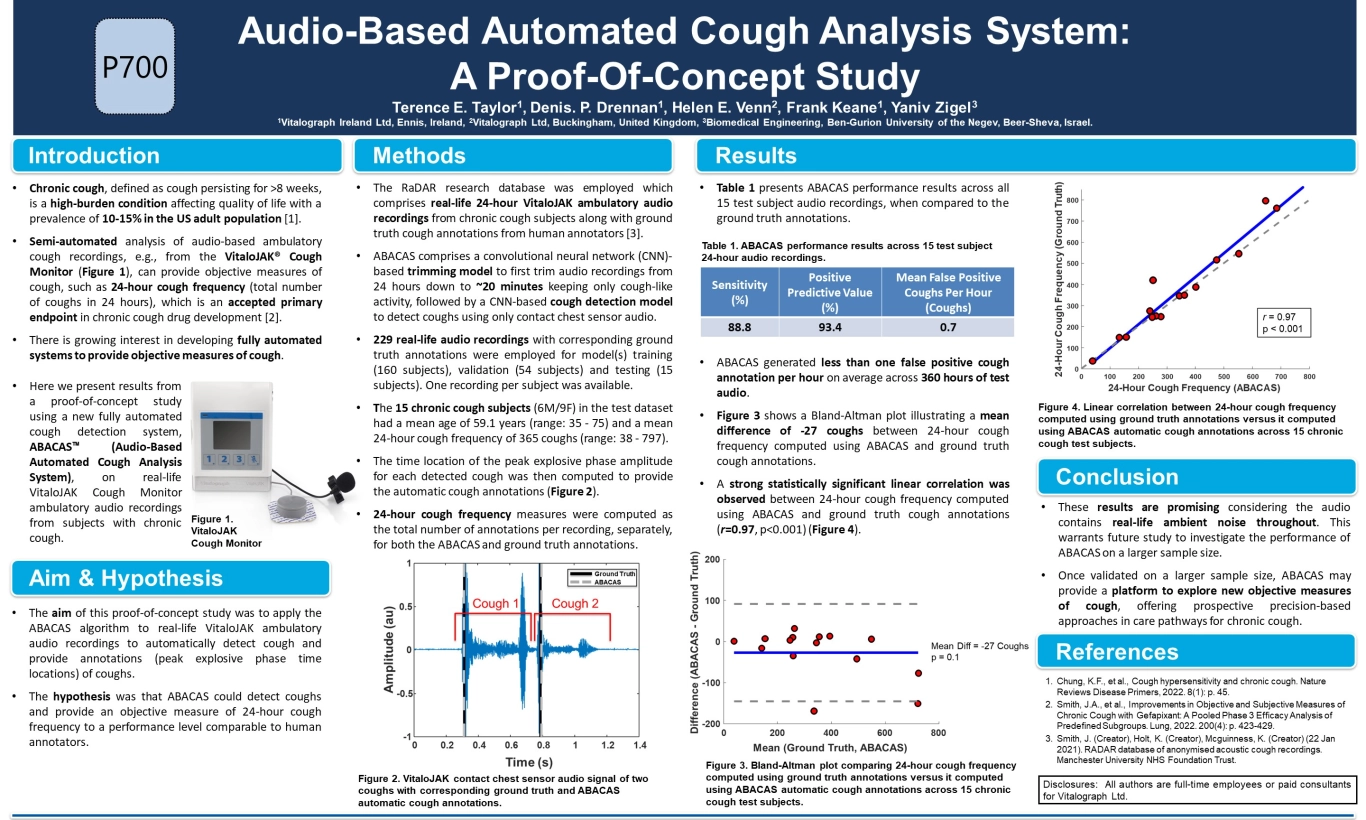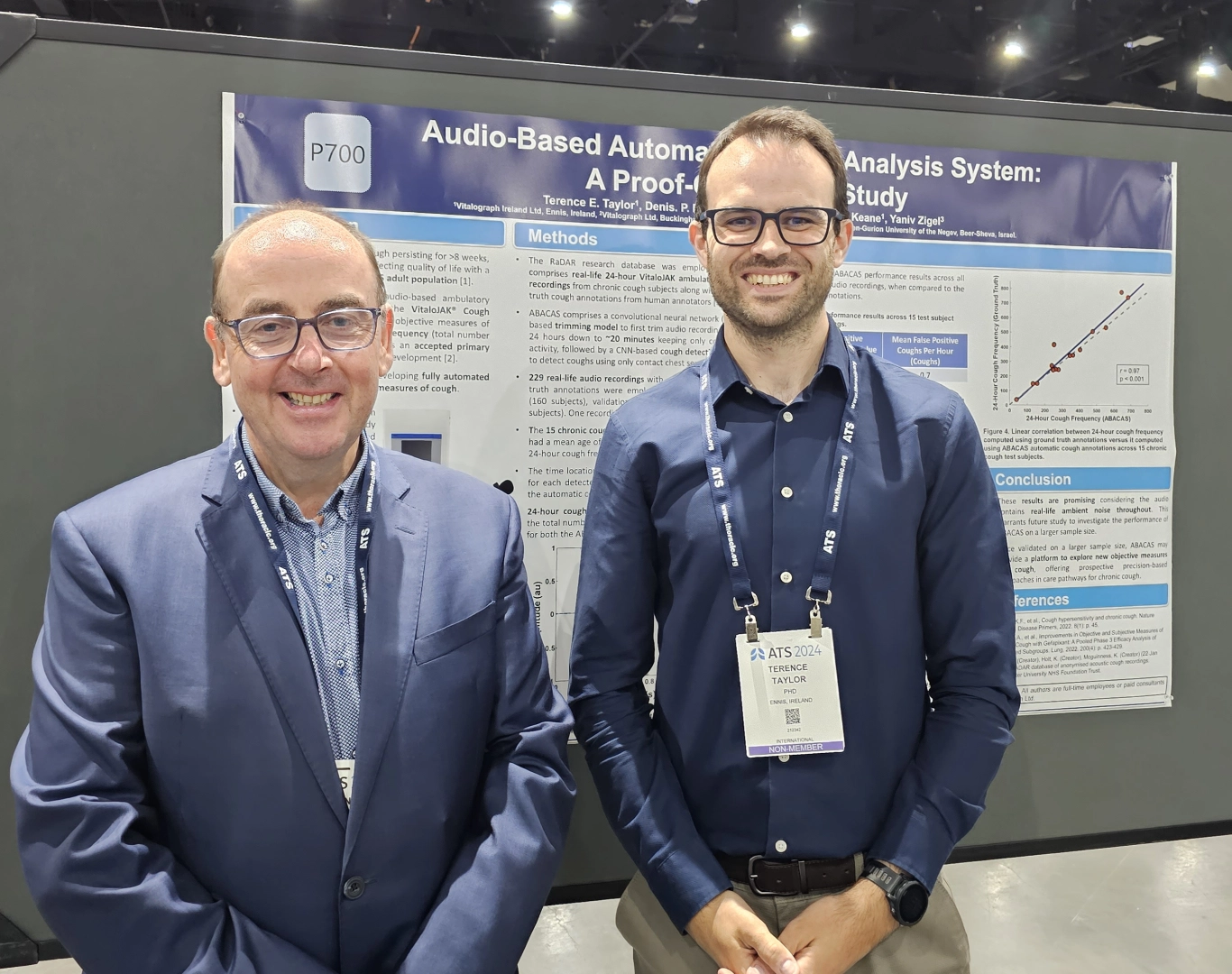Exploring the Future of Cough Analysis with Audio-Based Automated Systems
One groundbreaking development is the Audio-Based Automated Cough Analysis System (ABACAS). This proof-of-concept study, presented at ATS 2024 by Dr Terence E. Taylor and the Vitalograph Data Science Research Team, explores the efficacy of an automated system designed to analyse cough patterns using audio data.
Devices like the VitaloJAK provide semi-automated analysis of audio-based ambulatory cough recordings but there is growing interest in developing fully automated systems to provide objective measures of cough.
Why Explore Cough Analysis?
Coughing is a primary symptom for numerous respiratory conditions, but accurate and objective measurement of cough frequency and severity remains challenging. Traditional methods often rely on patient self-reporting or manual counts by healthcare professionals, which can be inaccurate and/or impractical. This study aims to bridge this gap by developing an automated system capable of providing time locations of coughs at a high level of sensitivity and precision. Such information may then be used to provide an objective measure of cough frequency.
Aim & Hypothesis
The main aim of the study was to evaluate the feasibility and performance of an audio-based system in identifying and quantifying coughs. The hypothesis was that the system could provide reliable cough detection comparable to manual counting methods, thereby offering a practical tool for both clinical and home settings.
Methods to Capture & Analyse Cough
The core of the study involved using the VitaloJAK Cough Monitor, an advanced device designed to capture and analyse cough sounds. Participants were equipped with the monitor, and their cough data were recorded over a specified period. The collected audio data were then processed to identify individual cough events.
To validate the system's performance, the results from the automated analysis were compared against a ground truth established by expert reviewers. The key metrics used for evaluation included sensitivity, positive predictive value, and mean false positive coughs per hour.
Pictured: Vitalograph CEO Frank Keane and Dr Terence E Taylor at ATS 2024
Results of the Study
The results of the study were promising:
Sensitivity: 88.8%
Positive Predictive Value: 93.4%
Mean False Positive Coughs Per Hour: 0.7
These metrics indicate that the system was able to accurately detect coughs with minimal false positives. The graphical representation of cough detection shows a clear identification of individual coughs (Cough 1 and Cough 2) in the audio waveform, demonstrating the system's capability to distinguish coughs from other sounds.
Additionally, a strong linear correlation was observed between the 24-hour cough frequency measured by the automated system (ABACAS) versus the ground truth (expert reviewer), further validating the system's performance.
Conclusion
The study concludes that the audio-based automated cough analysis system shows great potential as a reliable tool for cough monitoring. Its high sensitivity and positive predictive value, coupled with low false positive rates, make it suitable for clinical and home use. This technology could revolutionise how respiratory conditions and chronic cough are monitored, providing objective measures that can improve patient care and disease management.
This study highlights a significant step forward in the use of technology to enhance healthcare delivery. As these systems become more refined and widely adopted, they promise to offer new levels of insight and control over respiratory health management.
Discover more about Vitalograph's expertise in cough studies.



